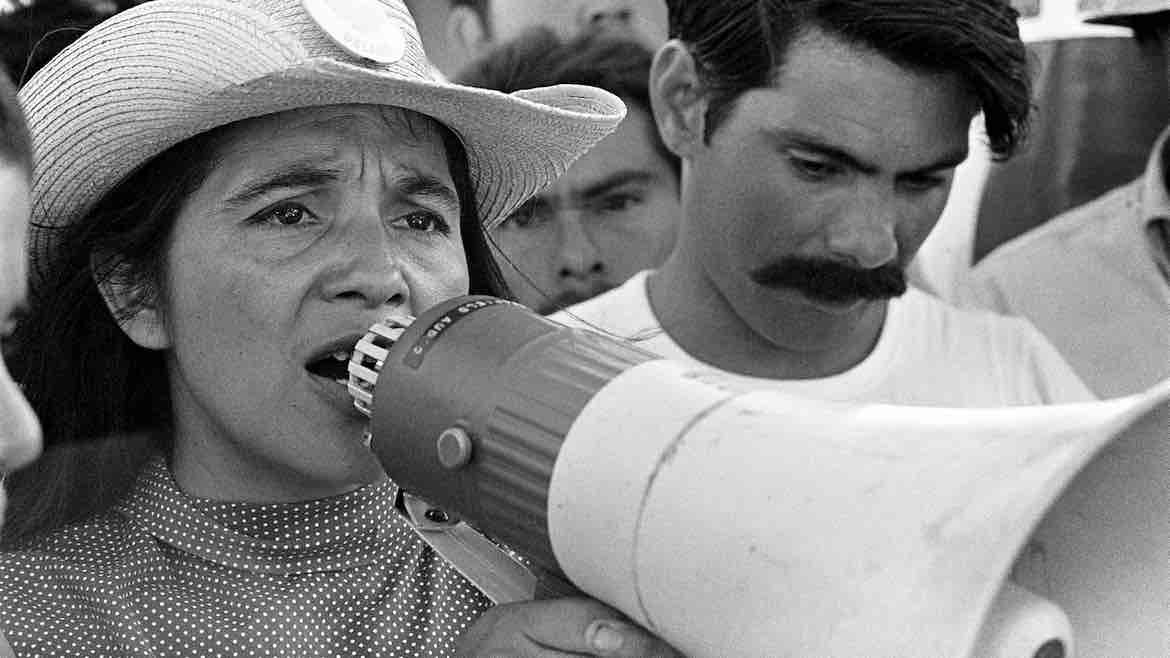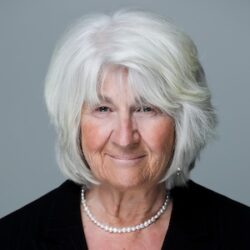How public TV can strengthen its alliance with independent filmmakers

George Ballis / Take Stock/The Image Works
Activist Dolores Huerta, co-founder of the first farmworkers union, was the subject of "Dolores," a Peabody-winning biographical film that debuted on "Independent Lens" in 2018.
When we started the ambitious project of interviewing filmmakers and public TV staffers to explore how to strengthen the relationship between indie filmmakers and public TV, we knew we had a personal stake in it.
We’re all on the Independent Television Service board. And ITVS, as an editorially independent organization committed to supporting diverse, independent voices for a diverse and complex America, thrives on that relationship. We know indies are a hyper-valuable asset, and not just for their extraordinary creative talent. ITVS filmmakers alone leverage $25 million annually in co-production funding that complements our public dollars.
We thought we knew the interests and challenges of indie filmmakers. But when we began interviewing producers from across the country, we did not expect to hear the passion for public TV, the insights and the pain that we did. Our report, Stories for a Stronger Nation, conducted with the Center for Media & Social Impact and released today, provides a detailed map of how to strengthen that link between indie producers and public TV, and explains why it’s so important.
We’re still deeply moved by what we heard, months after talking to 57 creative thought leaders throughout the field.
Pain
First, the pain. In a good year, filmmaking that’s aimed at enriching public dialogue is a precarious enterprise. But indie filmmakers’ lives and businesses were devastated by the pandemic. Members of this creative community suffered much higher unemployment and more business failures than the national average. And they noticed that none of CPB’s $250 million in coronavirus emergency relief money went to them, or any for the entities that help their projects come to public TV.
This isn’t just a loss for them. When filmmakers’ small businesses collapse, the losses imperil public TV’s content pipeline, filmmakers’ training pipeline and the diversity of perspectives that reach audiences. Public TV is worse off when the filmmakers who bring vibrant, constructive and engaging work to American viewers everywhere are hurt. They need help.
PBS babies
Second, the passion. Our interviewees love public TV. Many are “PBS babies.” They understand public TV is where meaningful projects, projects that a commercial streamer would overlook, can find a home. They believe in the mandate to serve communities across the country with stories that lead to change-making conversations. They love the investment in promotion, engagement and impact. And they really treasure the editorial independence public TV can give them. (As an organization founded by filmmakers, we at ITVS treasure that, too.)
They care about public TV, not just for themselves but for their younger colleagues and future generations.
Investor tips
And they have insights into where the disconnects are too. No one has been more up close and personal with those hiccup points. They gave us a clutch of highly specific suggestions, and some big ones.
Think of all those suggestions as investor tips.
Here are a few: In the acronym jungle of public TV, indies want respectful and even welcoming treatment. They want to see more collaboration that supports this diverse creative work among these acronyms, with more support of the entities that ensure their success — like ITVS, the National Multicultural Alliance, Firelight Media and indie-committed strands.
Public TV is losing opportunities to build lasting bonds with indie filmmakers. They want to know: Why does public TV lose its incubated talent to commercial entities, rather than committing to a first-look deal for their next project? They want public TV to make it easier for today’s audiences to find their work online. And they want stronger support at the local level. Stations could celebrate the regional filmmakers in their midst, air the work offered by national series and use these programs to engage with their communities.
Independents want a public TV system that courageously faces a critical moment, one of racial reckoning, climate crisis and democratic peril, and addresses it with stories that enrich public conversations about meaningful change. That’s why they are invested in public TV. They want public TV to proudly claim the work that helps create such broad public trust. “Where is the marketing that shows off what public TV does really well?” one of our interviewees said, with genuine puzzlement. They want to be part of revitalization for the next generation.
Respect
Filmmakers need and deserve a better relationship with public television. They need better financing, clarity, consistency, mentorship and promotion. This is a diverse group of creatives who have remained loyal to public TV in an increasingly competitive landscape. But they aren’t endlessly long-suffering.
They deserve our respect. That’s something it has been easy for ITVS to give, because we experience their creativity day in and day out. We see that their work engages communities around the nation. ITVS-funded films have won 45 Emmys and 43 Peabodys, and received 22 nominations for Academy Awards.
We hope this report makes it easier for more public broadcasters to engage with these courageous and compassionate people. Independent filmmakers are core to public TV’s value and essential to its future.
Garry Denny is director of programming for PBS Wisconsin and chair of ITVS’ board of directors. He has served on many of public TV’s systemwide committees, including the PBS Communications Advisory Committee, the CPB-funded Programmers’ Research Council and the board of the Public Television Programmers Association. He has also served on panels involved in content selection for POV and ITVS’ Open Call.
Sharon La Cruise, a former VP of admissions, programs and resident life at International House NYC, has 20 years of experience in television and film production. She previously worked at the Ford Foundation as a program manager and consultant. Her first film, Daisy Bates: First Lady of Little Rock, a feature-length documentary on civil-rights activist Daisy Bates, premiered on PBS’ Independent Lens in 2012.
Patricia Aufderheide is a professor of communication studies in the School of Communication at American University in Washington, D.C. She founded the school’s Center for Media & Social Impact, where she continues as senior research fellow. Her books include Reclaiming Fair Use: How to Put Balance Back in Copyright (University of Chicago) with Peter Jaszi and Documentary: A Very Short Introduction (Oxford).
Current is an editorially independent service of American University’s School of Communication.






